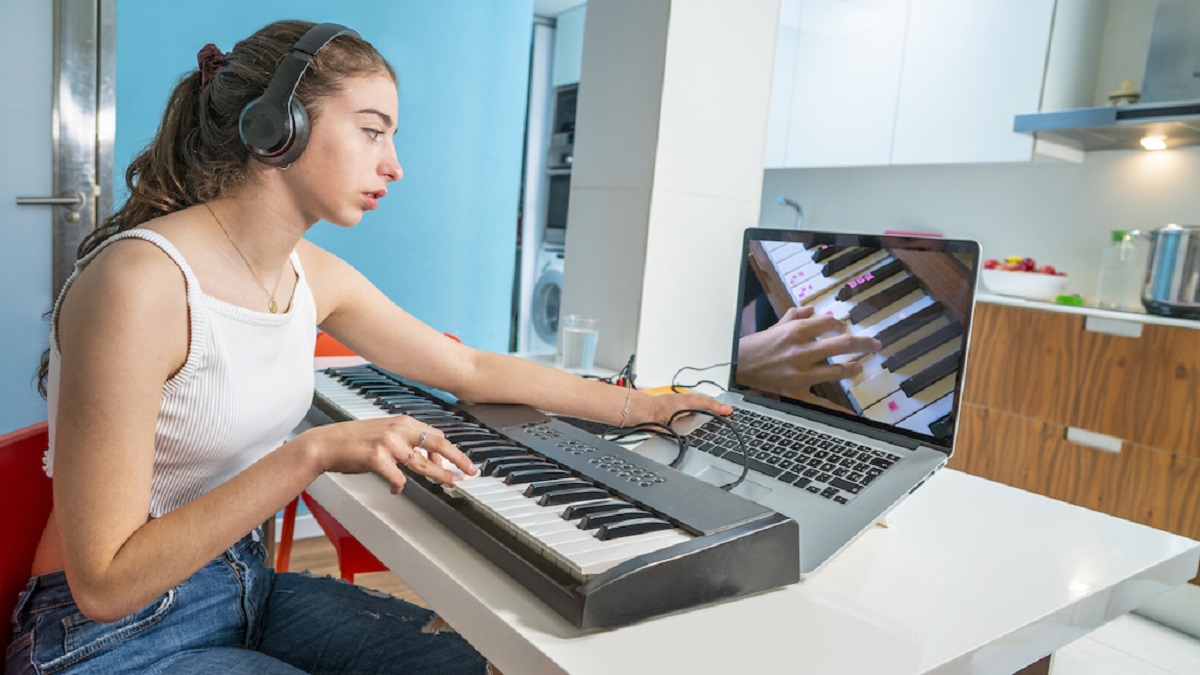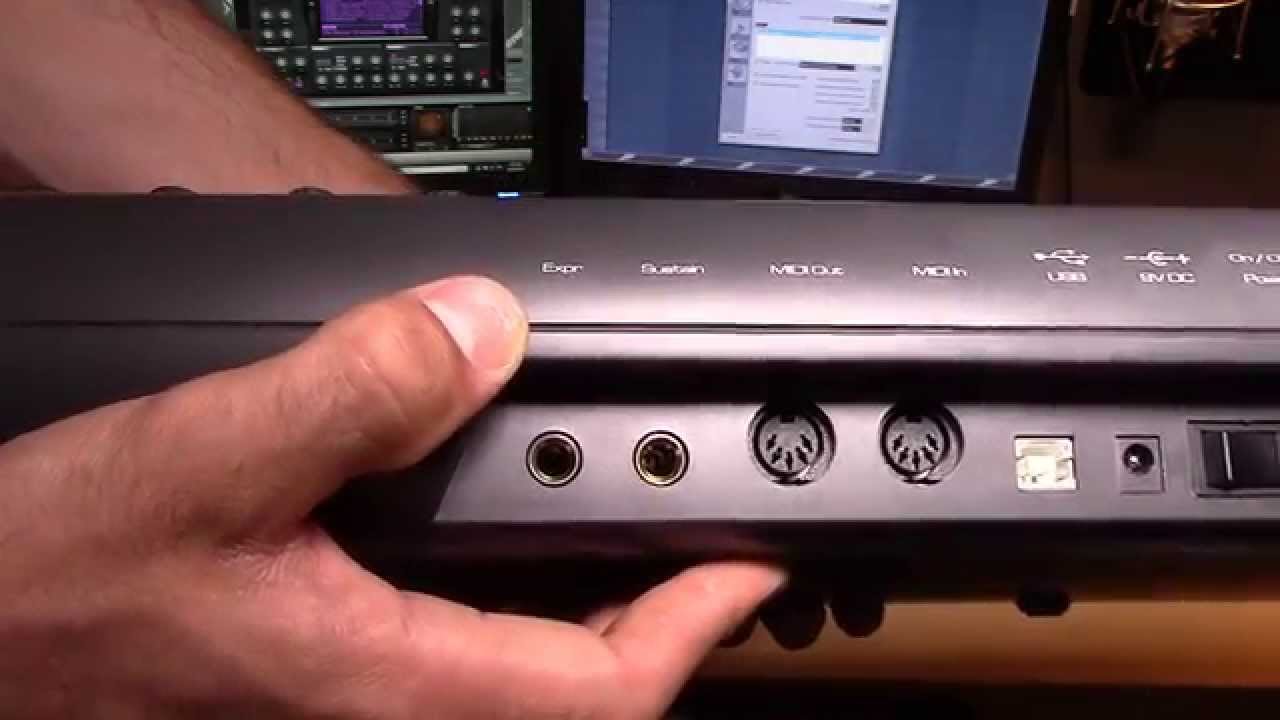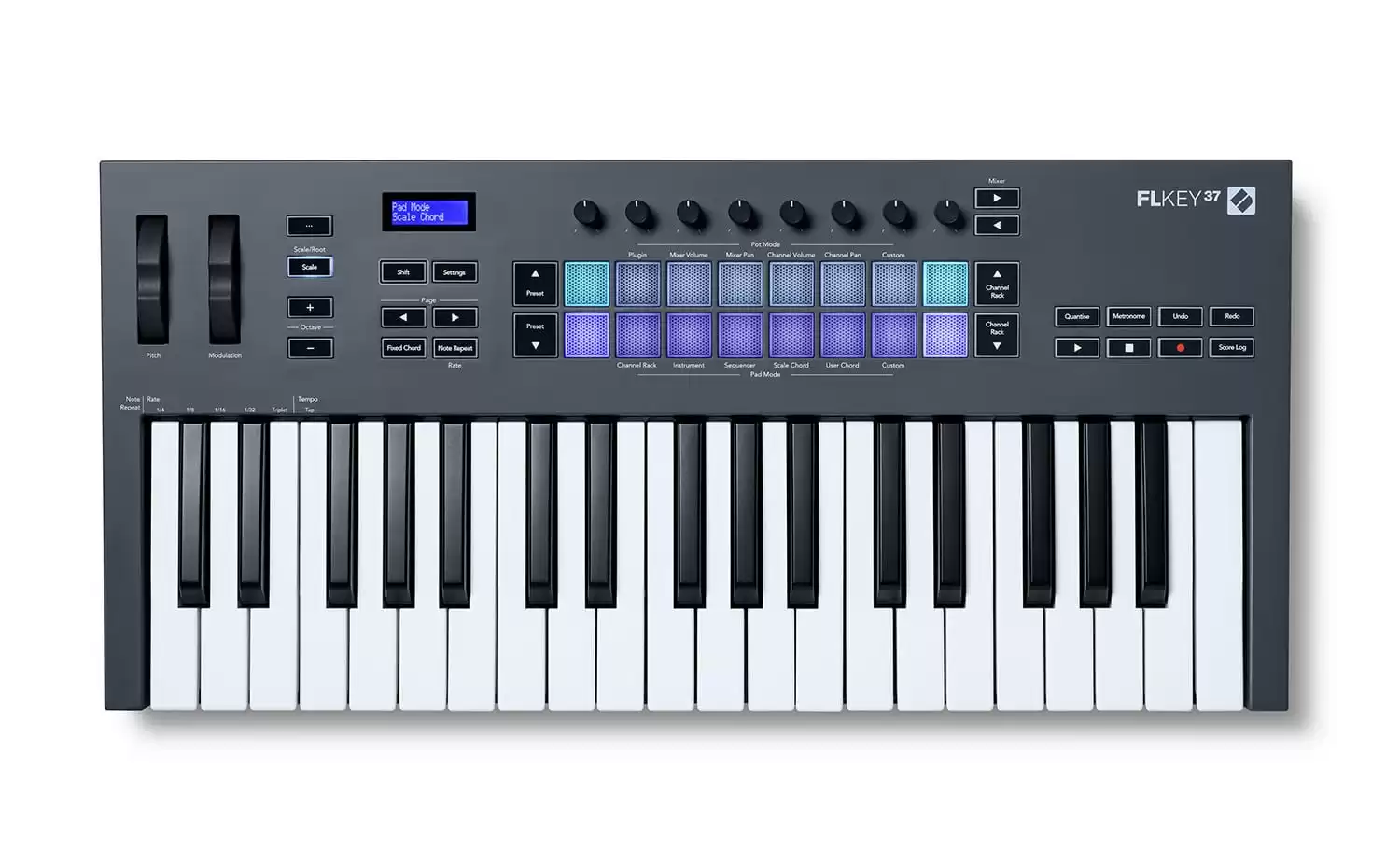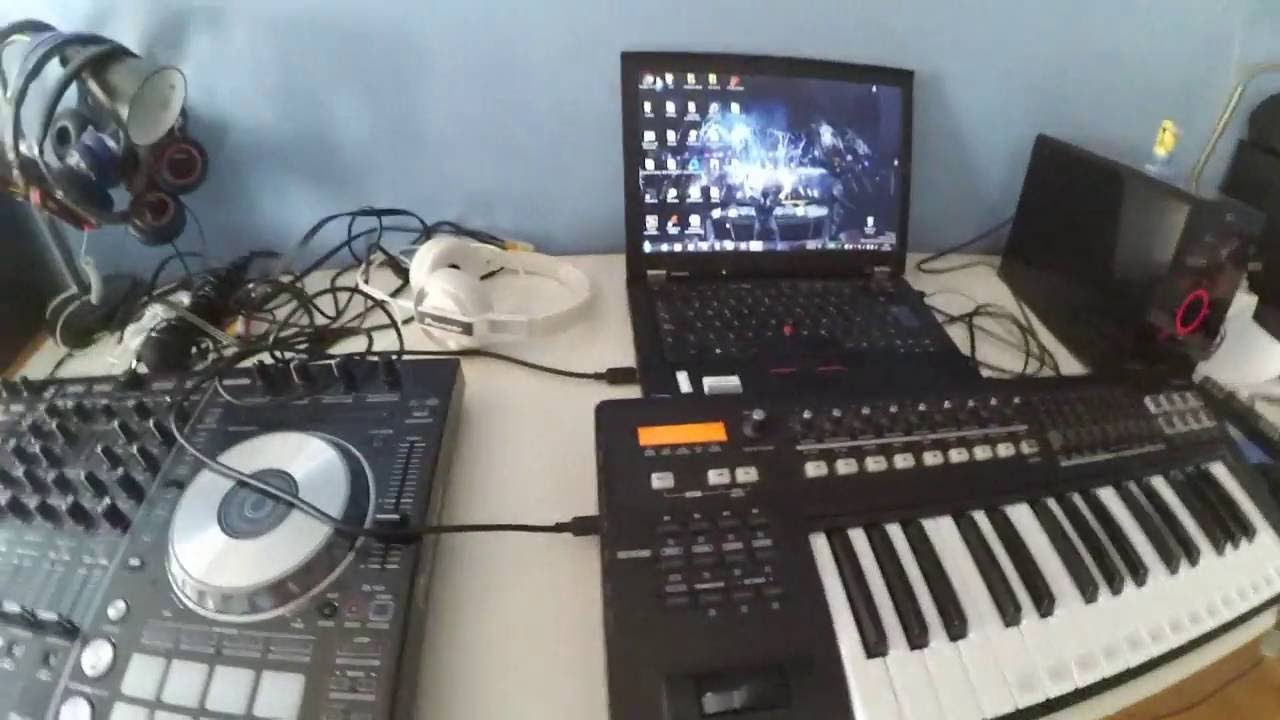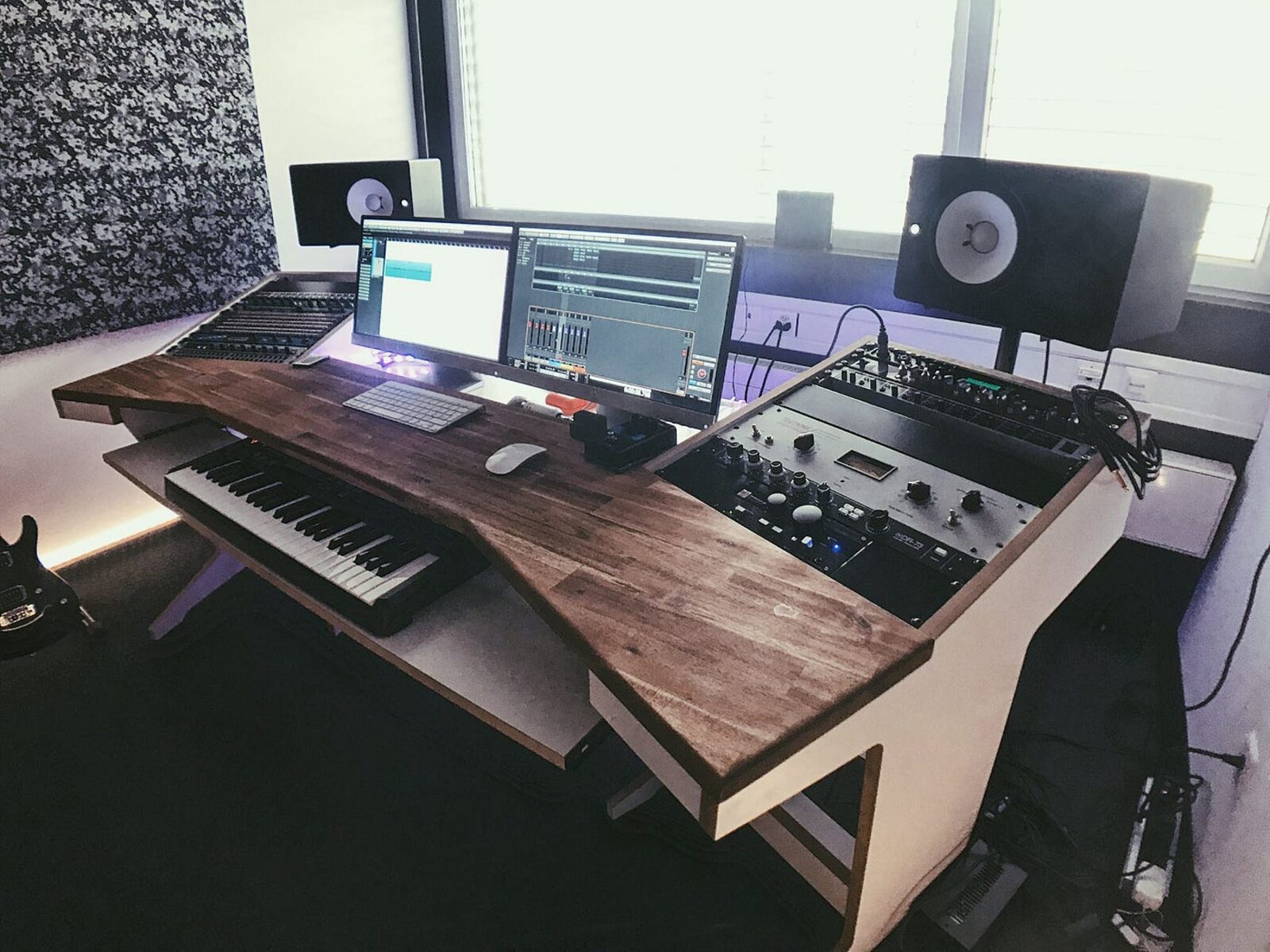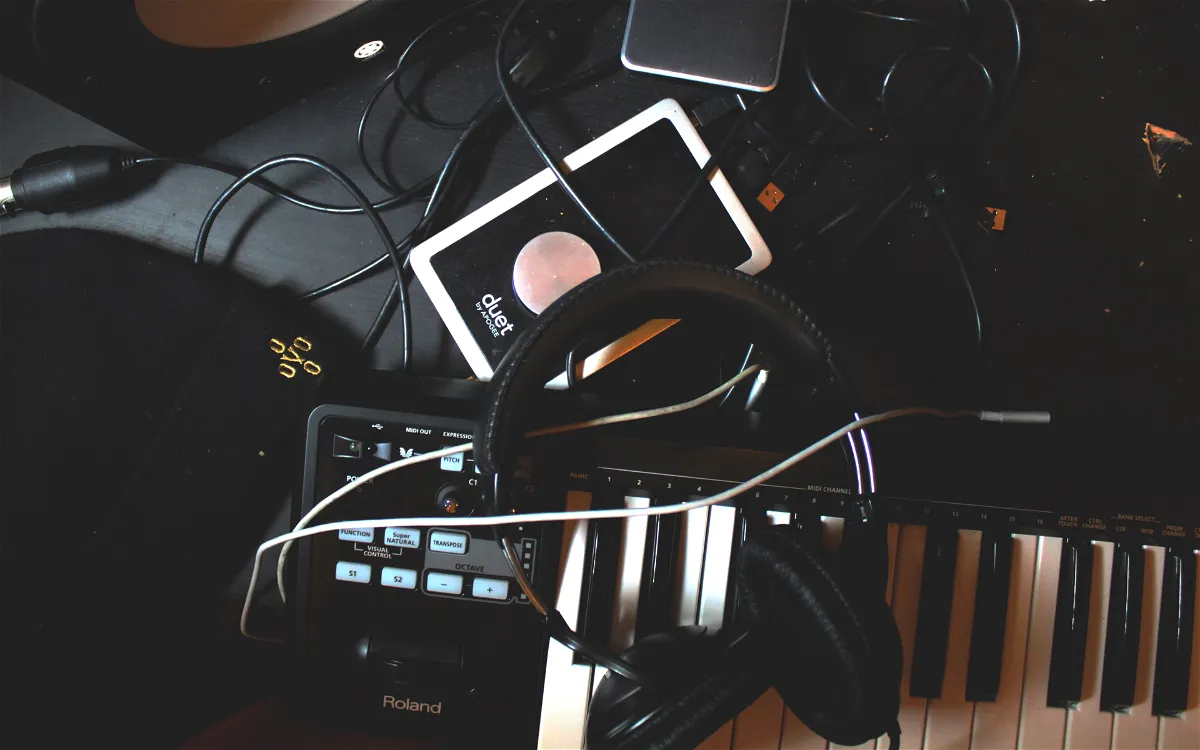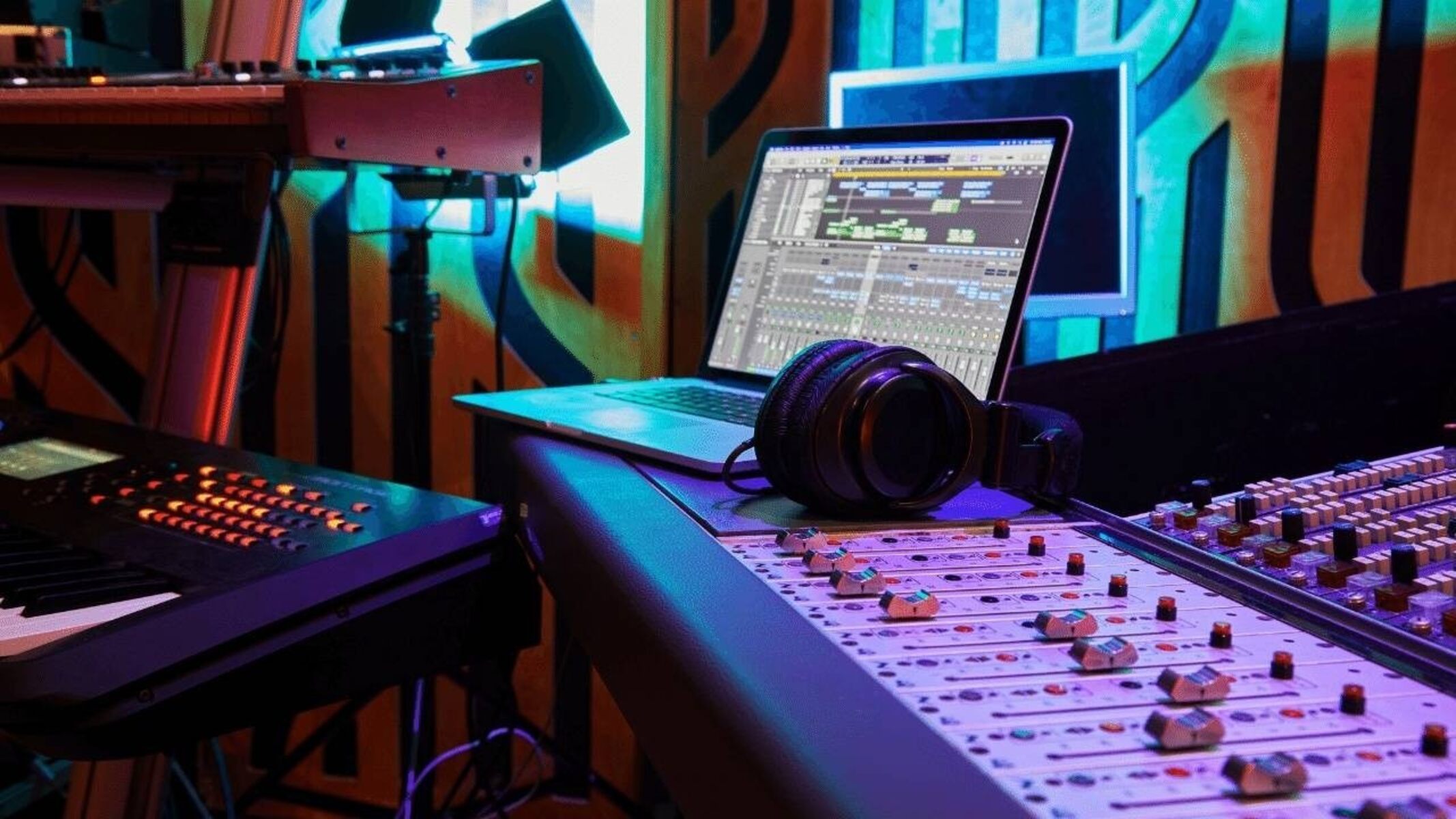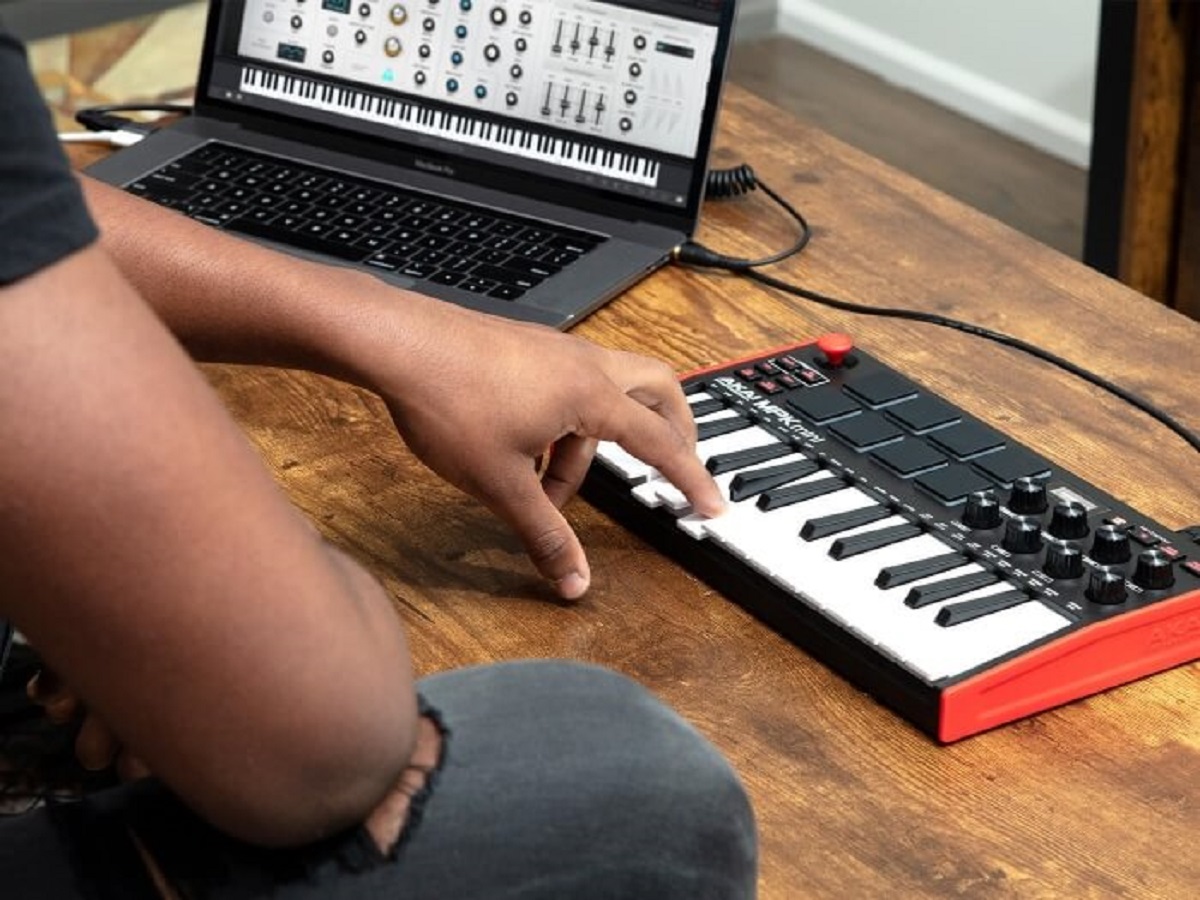Introduction
Understanding MIDI Keyboards and Laptop Speaker Integration
So, you've got yourself a MIDI keyboard and you're eager to start creating music on your laptop. But there's one small hurdle: you want to hear the sound of your MIDI keyboard through your laptop speakers. This may seem like a complex task, but fear not! With the right connections and configurations, you'll be able to seamlessly integrate your MIDI keyboard with your laptop's audio system. In this guide, we'll walk through the process of connecting your MIDI keyboard to your laptop and setting it up to play through your laptop speakers.
Whether you're a seasoned musician or just starting out, the ability to hear your MIDI keyboard through your laptop speakers can greatly enhance your music-making experience. By understanding the steps involved in this integration, you'll be able to fully harness the potential of your MIDI keyboard and unlock a world of creative possibilities.
In the following sections, we'll delve into the specifics of connecting your MIDI keyboard to your laptop, setting it up in your Digital Audio Workstation (DAW), configuring the audio output, and troubleshooting common issues that may arise along the way. By the end of this guide, you'll have a comprehensive understanding of how to seamlessly integrate your MIDI keyboard with your laptop speakers, allowing you to fully immerse yourself in the music production process. Let's dive in and explore the exciting world of MIDI keyboard and laptop speaker integration!
Connecting the MIDI Keyboard to Your Laptop
Before you can start playing your MIDI keyboard through your laptop speakers, you need to establish a physical connection between the two devices. The process begins by connecting your MIDI keyboard to your laptop using the appropriate cables. Most MIDI keyboards utilize either USB or MIDI cables for connectivity, and the method you choose will depend on the available ports on your laptop and the type of MIDI keyboard you have.
If your MIDI keyboard features a USB port, connecting it to your laptop is relatively straightforward. Simply plug one end of the USB cable into the USB port on your MIDI keyboard and the other end into an available USB port on your laptop. Once connected, your laptop should recognize the MIDI keyboard as a new device, and you may need to install any necessary drivers to ensure seamless communication between the two.
Alternatively, if your MIDI keyboard uses MIDI cables, you’ll need a MIDI-to-USB interface to establish a connection with your laptop. This interface serves as a bridge between the MIDI keyboard’s traditional MIDI connectors and the USB ports on your laptop, allowing for seamless communication between the two devices. Once the MIDI-to-USB interface is connected to your laptop, you can then plug the MIDI cables from your keyboard into the interface, enabling the transmission of MIDI data to your laptop.
It’s essential to ensure that the physical connection between your MIDI keyboard and laptop is secure to prevent any interruptions during your music-making sessions. Once the connection is established, you’re ready to move on to the next steps in the integration process.
Setting Up Your MIDI Keyboard in Your DAW
After successfully connecting your MIDI keyboard to your laptop, the next step is to configure it within your Digital Audio Workstation (DAW). Your DAW serves as the central hub for recording, editing, and producing music, and integrating your MIDI keyboard with this software is crucial for harnessing its full potential.
Upon launching your DAW, you’ll need to navigate to the settings or preferences menu to locate the MIDI input options. Here, you should be able to select your MIDI keyboard as a recognized input device. Once your MIDI keyboard is identified within the DAW, you can proceed to assign it to specific tracks or instruments within your projects. This allows you to control and play virtual instruments or trigger samples using the keys on your MIDI keyboard.
Many DAWs offer the flexibility to customize the MIDI input settings, enabling you to map different functions to the various controls on your MIDI keyboard. This level of customization empowers you to tailor the keyboard’s behavior to suit your specific workflow and creative preferences.
It’s important to note that some DAWs may require additional configuration steps, such as enabling MIDI input monitoring or adjusting latency settings to ensure a responsive and lag-free experience when playing your MIDI keyboard. Familiarizing yourself with the MIDI setup options in your DAW will allow you to optimize the integration of your MIDI keyboard and make the most of its capabilities within your music production environment.
By setting up your MIDI keyboard in your DAW, you’re laying the foundation for a seamless and intuitive music-making experience. The ability to directly interact with virtual instruments and software-based sound modules using your MIDI keyboard opens up a world of creative possibilities, empowering you to express your musical ideas with precision and fluidity.
Configuring Audio Output in Your DAW
Once your MIDI keyboard is set up within your Digital Audio Workstation (DAW), the next crucial step is configuring the audio output to ensure that the sound produced by your MIDI keyboard is routed to your laptop speakers. This process involves directing the audio signal from your DAW to the appropriate output device, allowing you to hear the music you create through your laptop’s built-in speakers or connected audio interface.
Within your DAW’s settings or preferences menu, you’ll find options to designate the audio output device. Here, you can select your laptop’s built-in speakers or any external audio interfaces connected to your laptop. By choosing the desired output device, you establish the pathway through which the audio generated by your MIDI keyboard and DAW will be delivered for playback.
It’s important to ensure that the audio output settings in your DAW align with the audio configuration of your laptop. This may involve verifying the sample rate, buffer size, and audio driver settings to optimize the playback performance and minimize latency. Adjusting these parameters can significantly impact the responsiveness and overall quality of the audio output, so it’s advisable to fine-tune these settings based on your specific hardware and performance requirements.
Some DAWs offer advanced routing and mixing capabilities, allowing you to create custom signal paths for your MIDI keyboard’s audio output. This flexibility enables you to route the sound through various effects, processors, and channels within your DAW, shaping the sonic characteristics of your music before it reaches your laptop speakers.
By configuring the audio output in your DAW, you’re ensuring that the music produced by your MIDI keyboard is seamlessly channeled to your laptop speakers, creating an immersive and engaging listening experience. This integration of hardware and software components empowers you to fully realize the sonic potential of your MIDI keyboard and DAW, bringing your musical ideas to life with clarity and precision.
Troubleshooting Common Issues
While integrating your MIDI keyboard with your laptop speakers, you may encounter certain common issues that can disrupt the seamless operation of the setup. Identifying and addressing these issues is essential for maintaining a smooth and productive music production workflow. Let’s explore some common problems and their potential solutions:
- Driver Compatibility: If your MIDI keyboard is not being recognized by your DAW or laptop, it may indicate a driver compatibility issue. Ensure that you have installed the latest drivers for your MIDI keyboard, and if necessary, check for firmware updates or compatibility patches provided by the manufacturer.
- Incorrect Input Selection: In some cases, the MIDI input settings in your DAW may not be configured correctly, resulting in a lack of response from your keyboard. Double-check the input settings in your DAW to ensure that the MIDI keyboard is selected as the designated input device for the desired tracks or instruments.
- Latency and Audio Glitches: Latency, or the delay between pressing a key on your MIDI keyboard and hearing the corresponding sound, can be a common issue. Adjusting the buffer size and audio driver settings in your DAW can help minimize latency and reduce the occurrence of audio glitches or dropouts during playback.
- Connection Stability: If you experience intermittent connectivity issues between your MIDI keyboard and laptop, inspect the physical connections and cables to ensure they are secure and free from damage. Additionally, consider using high-quality USB or MIDI cables to maintain a stable connection between the devices.
- Audio Output Selection: If you’re not hearing sound from your MIDI keyboard through your laptop speakers, verify that the audio output settings in your DAW are correctly configured to route the sound to the appropriate output device. This may involve selecting the laptop speakers as the designated audio output within your DAW’s settings.
By troubleshooting these common issues, you can overcome potential obstacles that may arise during the integration of your MIDI keyboard with your laptop speakers. Additionally, consulting user manuals, online forums, and support resources specific to your MIDI keyboard and DAW can provide valuable insights and solutions tailored to your setup, ensuring a seamless and uninterrupted music production experience.
Conclusion
Integrating your MIDI keyboard with your laptop speakers opens up a world of creative possibilities, enabling you to harness the expressive power of your keyboard while enjoying the convenience of laptop-based music production. By following the steps outlined in this guide, you’ve gained the knowledge and skills to seamlessly connect your MIDI keyboard to your laptop and configure it within your Digital Audio Workstation (DAW).
From establishing the physical connection between your MIDI keyboard and laptop to setting it up within your DAW and configuring the audio output, you’ve embarked on a journey that empowers you to fully utilize the capabilities of your MIDI keyboard in your music production endeavors. The ability to play virtual instruments, trigger samples, and control software-based sound modules using your MIDI keyboard enhances your creative workflow and brings a tactile, hands-on dimension to your music-making process.
As you navigate the intricacies of MIDI keyboard integration, troubleshooting common issues along the way ensures that any obstacles are swiftly addressed, allowing you to maintain a smooth and uninterrupted music production experience. By leveraging the troubleshooting techniques and resources available to you, you can overcome challenges and optimize the performance of your MIDI keyboard and laptop speaker setup.
Ultimately, the seamless integration of your MIDI keyboard with your laptop speakers represents a convergence of technology, creativity, and musical expression. Whether you’re a seasoned musician or an aspiring producer, this integration paves the way for immersive and inspiring music-making experiences, empowering you to bring your musical ideas to life with precision and artistry.
By mastering the integration of your MIDI keyboard with your laptop speakers, you’ve unlocked a realm of sonic possibilities and creative exploration. Embrace this newfound synergy between hardware and software, and let your musical journey unfold with boundless potential and expressive freedom.







